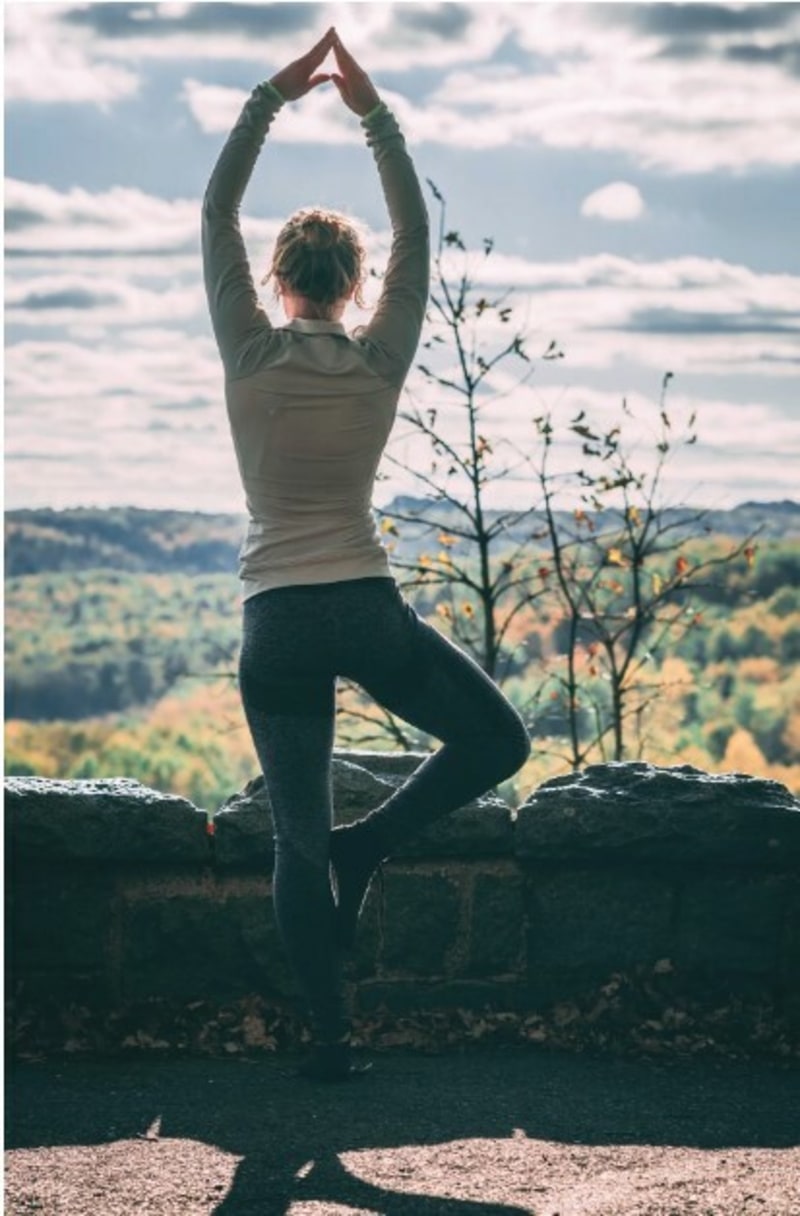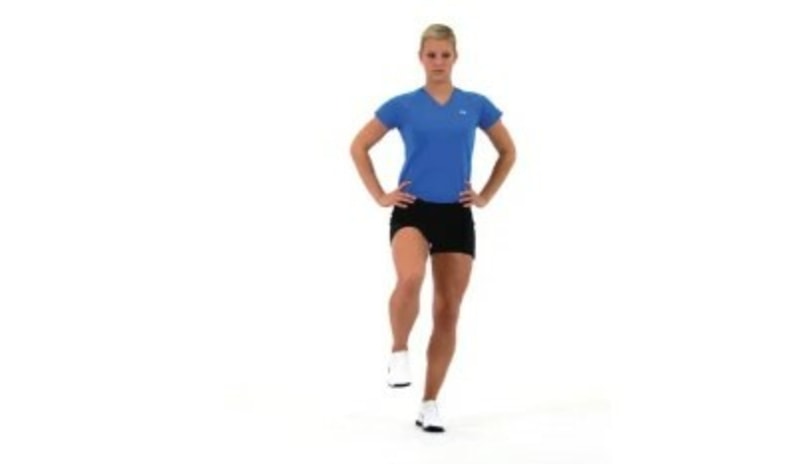
Balance-Use It or Lose It
December 10, 2019

“My balance stinks!”
“I can’t even do this on my other leg.”
“This is impossible!”
#thingspeoplesayinphysicaltherapy
During most physical therapy exams, particularly with clients who have sustained a lower extremity injury, it is common to take part in a balance assessment during the physical therapy evaluation. More times than not our clients find it extremely challenging to strike the following pose: eyes open, balancing on one leg, hands on the hips, opposite hip flexed to 90 degrees.

For our clients that don’t struggle so much in this position with their eyes open, we challenge them to perform the same posture with their eyes closed. “But why is it harder when I close my eyes,” they ask? LOVE THIS QUESTION. Time to nerd out on a topic we love, balance.
Your ability to achieve “equilibirium,” aka balance, aka stand without falling, is the result of the following three complex systems in your central nervous system working together to keep you upright:
- Visual System
- Somatosensory System
- Vestibular System
The visual system is probably the most comprehensible because it's what you are actually seeing with your own eyes. Think about how easily you can get from your bed to the bathroom with the lights on versus in the middle of the night with the lights off. This is why balancing on one foot with your eyes open is easier than with your eyes closed. When you close your eyes to perform this exercise you are removing the visual system from helping you achieve equilibrium.
Now things start to get a little fuzzy when we bring up the somatosensory system. If you aren’t in the medical profession you’ve probably never heard of the word proprioception. In general, proprioception refers to the body’s ability to perceive its own position in space. (2) Go back to our eyes open single leg balance activity. For simplicity, consider your proprioception in this scenario to be your ability to “sense” the ground beneath you, without relying on your vision or inner ear. This is why when you closed your eyes balancing on one foot became that much harder!
Perhaps one of the most complex systems from a comprehension standpoint is the vestibular system. Have you or someone you know ever had an inner ear issue that caused symptoms of dizziness? Let's do some mental gymnastics. The vestibular system provides sensory input through the inner ear and tells us about our head position in space and how (or if) we are moving. (3) Go back to our single leg balance activity. Imagine balancing on one leg, with your eyes closed, while standing on a pillow--your vestibular system would be hard at work helping you to stabilize as you have temporarily impaired the ability of the visual AND proprioceptive systems to work optimally.
Like many of our clients ask us, you may be asking yourself, “Does any of this even matter?” Why, OF COURSE, it matters! First of all, if your balance is impaired you are more likely to suffer a lower extremity injury. (4) If you are an athlete, you need to have good proprioception to know the position of your lower extremity without having to look down at your leg--when’s the last time coach told you to look down when you were running down the court, field, track, etc? So you say you don’t need to work on your single leg balance because you are “just a runner.” Running is essentially a series of single leg squat jumps. To be able to do a single leg squat jump you need strength, power, and last but not least...BALANCE! Let’s not forget about those pesky rocks and roots that you may cross during your weekly outdoor runs; if you don’t have the reflexive balance ability to recover from a “bump in the road” you may fall and sustain an injury.
Balance is also extremely important for anyone who has osteopenia or osteoporosis. Falls in this population can lead to fractured bones, one of the most severe injuries being a hip fracture. Did you know the risk of premature death increases significantly in those that break their hip and are 65 years or older and have osteoporosis? What if we told you improving your balance could save your life? (5)
The next time your physical therapist tells you that you need to work on your balance consider the wide spectrum of reasons you need it. The list above is short in comparison to ALL the areas of your life that would benefit from balance training. Good news is, your balance is like a muscle--you can strengthen it. The flipside of that is, if you don’t use it--you lose it.
Want to know more about injury prevention and balance training? Stay tuned for more information on our blog and follow us on instagram @physioletept for updates.
1)https://moriartypt.com/practical-guide-to-injury-recovery-ankle-sprain/single-leg-balance/
3)https://eyaslanding.com/the-vestibular-and-proprioceptive-systems-the-sixth-and-seven-senses/
4)https://www.ncbi.nlm.nih.gov/pmc/articles/PMC3752196/
5)https://www.ncbi.nlm.nih.gov/pmc/articles/PMC3118151/
Physiolete Therapy and Performance intends to provide information and education with the audiences health and safety in mind. The information on this website should not be used as a substitute for professional advice as circumstances vary from person to person. The information published on Physiolete Therapy and Performances website and social media is not to be interpreted as a recommendation for a specific treatment plan, product, or course of action. Exercise is not without risks as exercises listed on this website or exercise in general make result in injury. Injury includes, but is not limited to: acute injuries and/or re-aggravation of a pre-existing condition. Consult with a healthcare provider to reduce the risk of injury before beginning this or any exercise program. Information listed on Physiolete Therapy and Performance’s website is no way intended as a substitute for medical consultation. Remember when performing any exercise in general, if you begin to feel faint, dizzy, have physical discomfort you should stop and immediately consult a physician.

